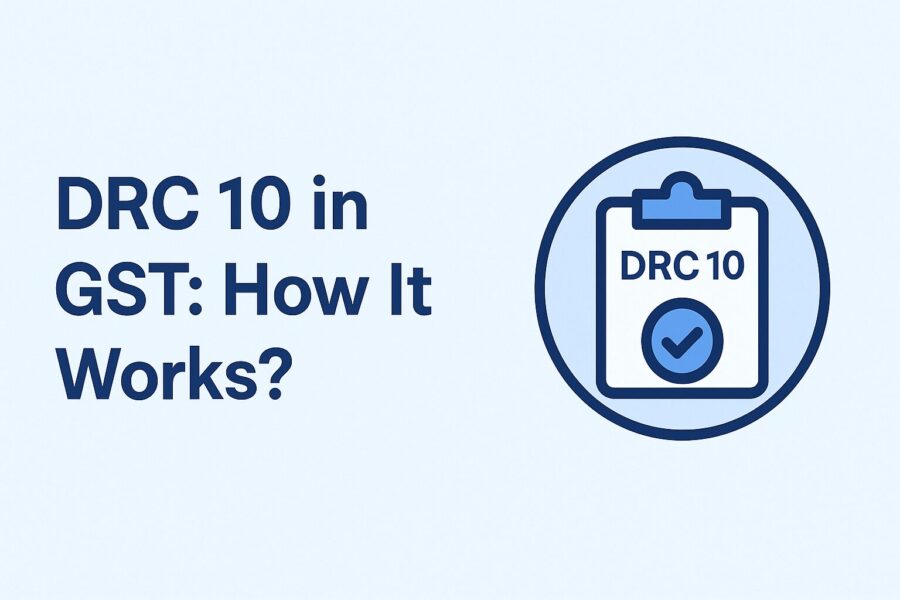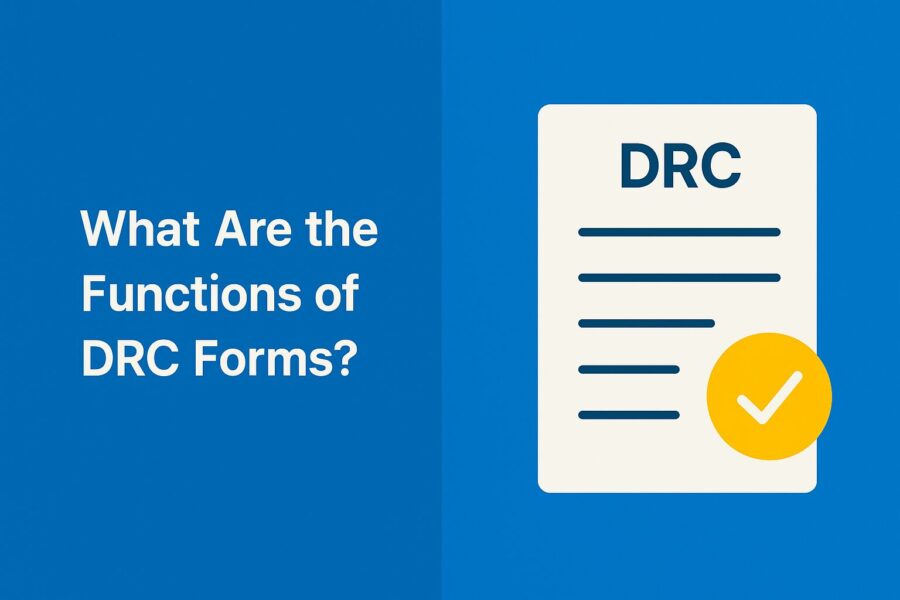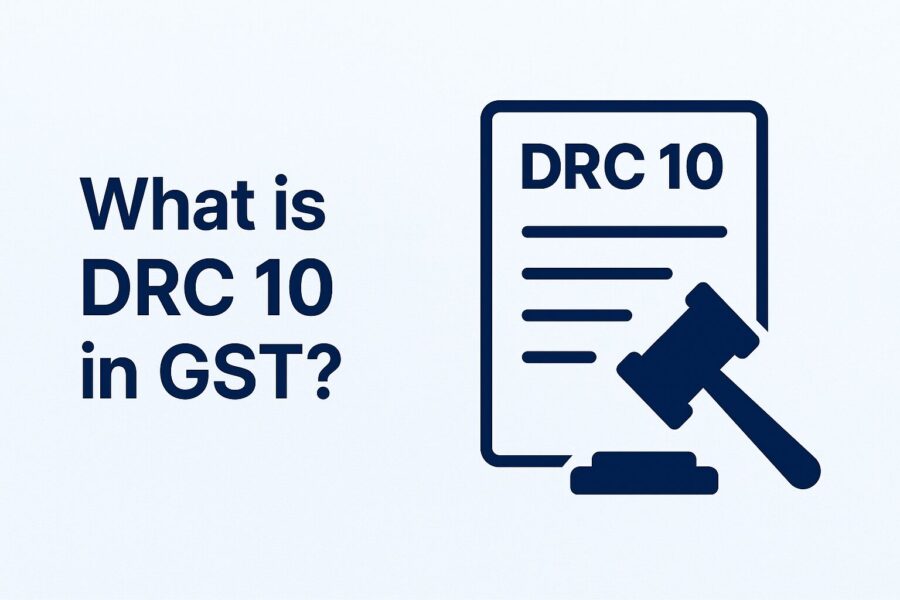DRC 10 in GST: How It Works?
- 14 Jul 25
- 6 mins

DRC 10 in GST: How It Works?
Key Takeaways
- DRC-10 is issued under Section 79(1)(b) of the CGST Act for auctioning a defaulter’s goods.
- It is triggered when tax dues remain unpaid despite earlier notices like DRC-01 and DRC-02.
- The form lists movable or immovable assets to be sold in a public or e-auction.
- Auction must be held within 15 days of notice unless goods are perishable or hazardous.
- Early response to DRC notices helps taxpayers avoid penalties and asset seizure actions.
A Demand and Recovery Case enables tax authorities to retrieve unpaid GST dues from a taxpayer. Being directly involved in the recovery and demands proceedings of taxpayers, DRC forms enforce tax compliance under the GST regime.
There are different types of DRC forms that a business might receive, depending on the situation. The forms range from DRC-01 to DRC-20. Each one of these issues of notice caters to the requirements and retrieval processes, including penalty imposition, notice for selling, recovering unpaid dues, dispute resolution, sale certificates and so on.
In this blog, we will walk you through a guide on DRC 10 in GST, while highlighting the associated details you need to know about DRC forms.
What Are the Functions of DRC Forms?

The functions of DRC forms mainly include the following:
- Communicating Tax Liabilities
All DRC forms, including DRC 10 in GST, assist in communicating tax liabilities to the taxpayers. These forms also help in resolving disputes between the GST department and the taxpayers.
- Ensuring Tax Compliance
Up until now, only a few DRC forms have been in use. After utilising these forms, facilitating voluntary payments from the taxpayers has become convenient.
- Recovering the Due Tax Amount
DRC forms also help in recovering unpaid taxes through legal proceedings. DRC-01 and DRC-02 are primary forms that indicate tax discrepancies. After getting these notices, if a taxpayer acknowledges and pays the due amount using the DRC-03 form, they can avoid further complications.
What Factors Determine the Issuance of the DRC Forms?
The Goods and Services Tax law gives authority to a jurisdictional officer to check the following:
- Whether a taxable person did not pay the Government's tax (Sections 73 and 74)
- If payment of tax is short-paid, meaning the tax amount is less than what was due
- Wrongly availing ITC or Input Tax Credit (Sections 73 and 74)
- Erroneous tax refund. (Sections 73 and 74)
- Tax collection took place under the wrong head (Section 77)
- Taxpayer collected the tax but did not pay the Government (Section 76)
What is DRC 10 in GST?

The DRC 10 form is a notice for auction of goods under section 79 (1) (b) of the CGST Act. When someone defaults on tax payments, there are multiple ways to recover. One such way is a notice of sale. As per this type of notice for attachment, a proper officer sells goods owned by a defaulter following Section 79 (1) (b) of the CGST Act.
These goods are usually controlled by a designated proper officer. This officer issues a fresh notice using the DRC 10 form under Rule 144 (2) and has the authority to decide whether these goods will be sold further in a public auction, including e-auction. The DRC 10 form contains the details of the goods to be sold and their selling purpose.
How Does the DRC 10 in GST Work?
According to provisions of Rule 144 (2)[3] under which DRC 10 form functions, a proper officer issues an inventory of movable and immovable properties of a tax defaulter to estimate market value. Based on the due tax amount and the expenditure that took place at the time of recovery, the amount of goods to sell is determined.
Once the amount is finalised, an auction takes place within 15 days from the issuance date. But if the goods are perishable or hazardous property, the proper tax officer sells them immediately.
Sample Format of FORM GST DRC – 10
Conclusion
When all other types of tax recovery processes fail, an officer issues Form DRC 10 in GST. This demand notice authorises the auction and seizure of taxpayers' assets when they fail to pay their due tax amount within a certain time limit.
If taxpayers respond promptly to DRC notices, especially DRC 1 and DRC 2, and complete the payment, they can avoid the imposition of a penalty and asset seizure by the Board or Corporation.
💡If you want to streamline your invoices and make payments via credit or debit card or UPI, consider using the PICE App. Explore the PICE App today and take your business to new heights.

















